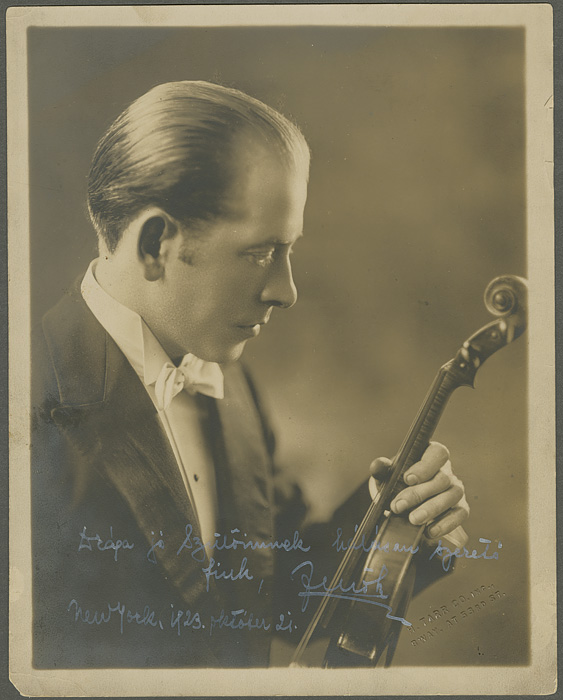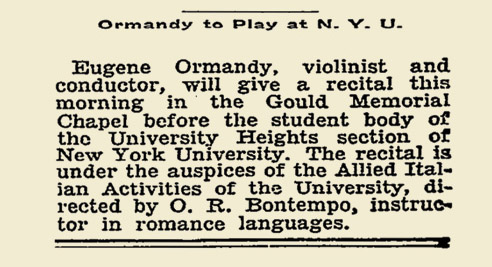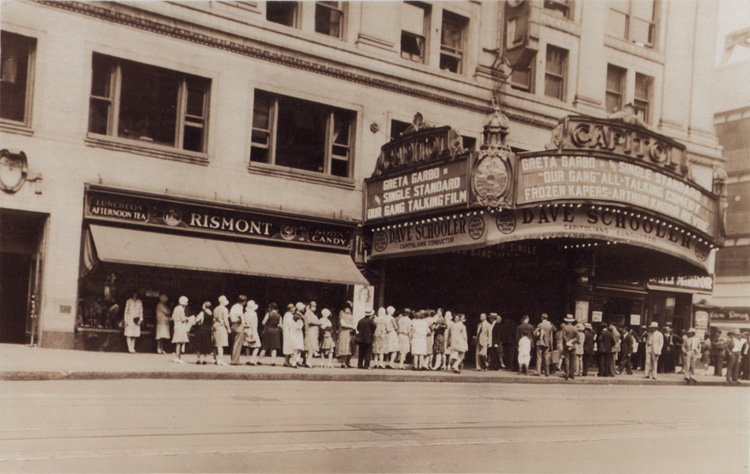Ormandy was born in Budapest in 1899 and entered the Budapest Conservatory as a violinist at the age of five. After graduating in his midteens, he was poised for a career as a soloist and embarked on a series of European tours. The promise of a $30,000 fee for an extended American tour of three hundred concerts led Ormandy to immigrate to the United States in 1921. Upon his arrival, the tour did not materialize, and he was left to take whatever playing job he could find. He settled for a $60-per-week position playing violin in the back row of the orchestra of the Capitol Theater, a Broadway movie house. The eighty-five-piece ensemble accompanied silent films and played classical music between screenings. His skills as a violinist were recognized quickly, and within a week he had been promoted to concertmaster. The orchestra played four shows a day, seven days a week, and Ormandy had few days off.
In September 1924, he arrived at the theater one day for a matinée show and was told he would need to fill in for the regular conductor. With fifteen minutes' notice, he conducted from memory a performance of an abridged version of Tchaikovsky's Symphony no. 4. Two years later, when one of the Capitol's two associate conductors moved to another theater, Ormandy was appointed as his replacement, and from that point he shifted his focus to conducting. His work became known outside the movie house through broadcasts of the Capitol Theater Orchestra on the Columbia Broadcasting System radio network.
Fig. 1: This publicity photograph was taken two years after Ormandy's emigration from Hungary
Fig. 2: During his first decade in the United States, Ormandy was active as a violin soloist and was frequently heard in recitals and radio broadcasts.
Fig. 3: The movie advertised on the marquee, "Single Standard," was released in July 1929, close to the time Ormandy left the Capitol Theater to pursue his conducting career. He left just as sound films-"talkies," with music included on the soundtrack-were growing in popularity, and movie houses were disbanding their house orchestras. The Capitol Theater was demolished in 1969.


